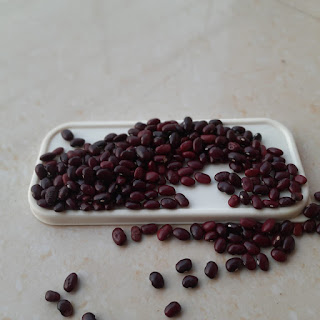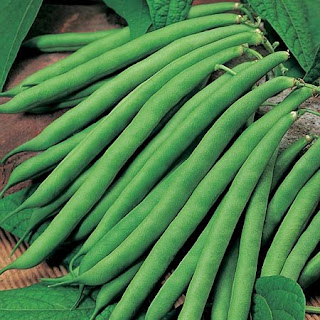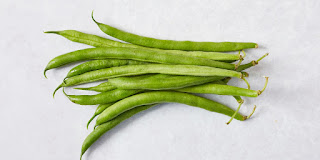horticulture guruji
French Bean Cultivation
French Bean is an important vegetable crop of Leguminoceae family. It is rich in nutrients and protein. It is probably a native of South and Central America, where in ancient times Red Indians cultivated French bean as a mixed crop with maize. Spanish introduced it into Europe and then it is spread to other parts of the world. In this chapter we will understand the cultivation of French bean in detail.

Other Name:- Pharash Bin, Banglore Bean, Avarai, Rajma, Kidney Bean, Haricot Bean, Snap Bean, Navy Bean
Botanical Name:- Phaseolus vulgaris
Family:- Leguminoceae
Chromosome No.:- 22
Origin:- Mexico (South America)
Important points
- French bean varieties are day natural (Except semi-pole type – short day)
- Highly tolerant to soil salinity.
- A toxic substance present in French bean is
- About 94% part of the pod is edible.
- Pole type varieties require support/ Staking.
- Cracking of cotyledon is more when seed moisture below 12%.
- Water excess and water stress in both conditions are harmful to French beans.
- In green pod of the French bean have 17.4% protein and the dry seed contains 24.9% protein.

Watch Lecture Video
Area and Production
- French bean widely cultivated in Karnataka, Andhra Pradesh, Jharkhand, and Maharashtra.
- According to the NHB database, 2018 total beans area in India is 228 thousand hectares and production is 2277 thousand MT.
Variety
- Pole type
Kentuky wonder
Tweet wonder
Pusa Himlata
Blue Lake
Lakshmi:- F1
SVM 1:- F1
2. Bush Type
Contaender:- resistant to powdery mildew and mosaic
Giant Stringless
Pant Anupama
Arka Komal
Bountiful
Green Rular
Golden Rular
Romano
Spartan Arrow,
King Green,
Premier,
Top Cross
Selection 2
Pant Bean 2 (UPF 626)
Arka Suvidha
Jampa
Pusa Parvati:- Mutant
Climate
It is a day-neutral crop. French bean is sensitive to high temperature and frost. A temperature of about 160 to 240C is best to get a higher yield. At a high temperature of 350C blossom drop and ovule abortion is common in French beans. High rainfall at the time of monsoon also reduces yield.
Soil
French beans can be cultivated in all types of soils from light sandy to heavy clay soils. The best pH range for French beans is between 5.5 to 6.0.
Seed Rate and seed Treatment
The seed rate of French beans depends on varieties type, soil, and locality. The seed rate for bush-type varieties about 50-70Kg /ha. And the seed rate for pole-type varieties should be kept about 25-30Kg/ha.
Before sowing, seeds are treated with Captan or Thiram @2gm/Kg seed and also with Rhizobium culture.
Sowing time
- In plains, sowing of seed is done in two seasons are July to September and January-February.
- In the Hills, the sowing is done from March to the beginning of May.
Field Preparation
The field should be plough 3-4 times with a cultivator to make good soil tilth.
Sowing
Generally, Bush type sowing at 30 X 5 cm. row to row and plant to plant spacing. At this spacing about 2.5lac plants planted in one hectare. Therefore, pole type varieties are often sown in hills at 90 X 7.5 cm row to row and plant to plant spacing. At this spacing, about 80,000 plants are planted in one hectare.
Manure and Fertilizers
At the time of the last ploughing, about 20-25 tons of FYM is mixed with soil. French bean is a leguminous crop, so it responds to phosphatic and potassic fertilizers. The recommended dose of Nitrogen 40Kg/ha, Phosphorus 60Kg/ha., and Potash 50Kg/ha. A full dose of phosphorus, potash, and a half dose of nitrogen should be applied at the time of sowing, and the remaining dose of nitrogen given 30 days after sowing as a top dressing.
Sometime micronutrient like B, Cu, Mo, Zn, and Mg deficiency is seen in some fields, at that time 0.1% dose of particular elements should be applied as a foliar spray.
Irrigation
French bean requires 6-7 irrigation at their entire life cycle. It is a shallow-rooted crop so over-irrigation is avoided but at the time of sowing, flowering and fruiting proper soil moisture are necessary to get a good yield.
Weeding
At the initial stage of plant growth about 2-3 weeding is necessary to keep field weed-free. Besides that, pre-emergence weedicides like Alachlore (2.0-2.5Kg/ha) or pendimethalin also effective to control the weed population.
Use of PGR
|
Sr. No. |
Chemical |
Dose (ppm) |
Effectiveness |
|
1 |
PCPA |
2ppm |
Increase fruit set in prevailing temperature |
|
2. |
GA3 |
50ppm (30 days after sowing) |
Increase growth, no of leaves, and pods |
|
3. |
CCC |
400ppm (before flowering) |
Stop growth, increase flowering and increase yield |
Harvesting
The green pods are ready to harvest after 45 to 75 days of sowing depending on the varieties. Green pods for the vegetable purpose should be harvested before the pods are fully grown and while the seeds are still small. Picking of pods is done by hand.
The dry beans are harvested when a large percentage of pods turn yellow, before start shattering. Most of the varieties are ripe unevenly. So, it is necessary to harvest full ripe pods regular interval to prevent losses due to shattering.
Yield
The yield of green pods from bush type around 30 -40 q/ha. And from pole type, it is 60 – 150 q /ha. The average yield of dry bean about 12 -18 q/ha.
Disease Management
- Anthracnose (Colletotrichum lindemuthianum):-The early indications of contamination are the presence of block red to purplish-red staining along the veins on the lower surface of the leaves followed by comparable side effects on the upper leaf surface. On the stem, the injuries are at first oval which later broadens and have depressed cankerous focus. The spots on leaves and cases extend and produce small, dark-hued acervuli in the middle which under damp conditions overflow out gooey beads comprising of a mass of pinkish spores.
Control
- Use healthy seeds
- Follow clean cultivation
- Avoid overhead irrigation
- Seeds should be treated with captan or Thiram @2gm/kg seed before sowing.
- To control disease spray with copper fungicides like Diathane Z 78, Benlate etc.
- Powdery Mildew (Erysiphe polygoni):- Growth of white powder was observed on the leaves, stem and other parts of the plant. When there is more outbreak, the entire plant dries up.
Control
- Apply sulphur dust or karthane on the affected plants.
- Web Blight (Rhizoctonia solani):- Initial symptoms are seen in the seedling stage plant show damping-off signs. Then oblong, water-soaked and reddish-brown spots appear on stem and leaves. This checks the photosynthesis activity of the plant. Due to this plant growth stops.
Control
- Before sowing seeds are treated with thiram or carbendazim @2gm/Kg seed.
- Spray carbendazim 0.05% on the affected crop.
- Kept field weed-free.
- Angular leaf spot (Isariopsis griseola):- Reddish-brown angular spots are seen under the surface of the leaves. The later stage they spread on pods and other plant parts. When there is more outbreak, the leaf falls.
Control
- Follow crop rotation.
- Spray carbendazim 0.05% on the affected crop.
Pest Management
- Stem Fly (Ophiomyia phaseoli):- This is a serious insect of beans cause 80-90% losses to crop. After germination of plant the adult lay an egg in the leaves and after hatching larvae feed on plant parts like stem, leaves, etc.
Control
- When insect saw spray with Monocrotophose or Dimethoate or Oxymethyle demeton 0.05%. or spray with neem extract @ 5%.
- Jaside (Empoasca tabae):- This pest shows specific symptoms like ‘hopper burn’ on the crop. In the fatal attack of this insect, the margin of the leaf becomes yellow and the leaves become wavy.
Control
- Spray crop with phosphomidone or oxymethyl demetone 0.5%.
- Aphid (Aphis craciuora):- Aphids suck the sap from the tender parts of the plant, resulting in curling of leaves, twisting of twigs and sometimes the falling of flowers.
Control
- To control aphid spray the phosphomidone 0.5% on the crop.
Physiological Disorder
- Blossom Drops
Blossom drop is a common problem in French bean. This disorder is caused by high temperature. When the temperature goes above 300C, the flower or immature flower buds begin to fall.
- Hypocotyl Cracking (necrosis)
A deficiency of calcium and magnesium leads to the death of hypocotyl tissues.
- Transverse cotyledon cracking
White seeded varieties of French bean are more prone to this disorder. It is more when dry seeds are planted in wet soil. Varieties having hard seed coat are less prone to this disorder. At the time of sowing seeds having more than 12% moisture better for good germination.

